
Madden NFL 2003 is an American football simulation video game based on the NFL that was developed by EA Tiburon and Budcat Creations and published by EA Sports. The 14th installment of the Madden NFL series, the game features former St. Louis Rams running back Marshall Faulk on the cover. This edition of Madden was the first to have EA Trax, the Mini Camp mode, and to feature Al Michaels as play-by-play announcer, who took over for Pat Summerall. Although it featured the expansion Houston Texans and the relocation of the Seattle Seahawks to the NFC, it was actually the second to do so. The game was released on August 12, 2002, for the Game Boy Advance, GameCube, Microsoft Windows, PlayStation, PlayStation 2 and Xbox. The PlayStation version also includes the Sega Genesis version of John Madden Football 93.
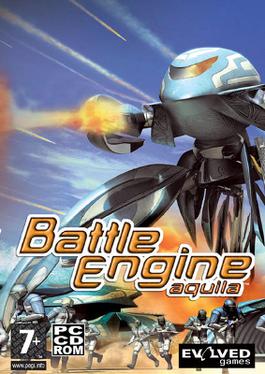
Battle Engine Aquila is a 2003 video game for PlayStation 2 and Xbox developed by Lost Toys and published by Infogrames Europe. In the game the player pilots the Battle Engine for the Forseti military in their wars against the Muspell to decide who will rule what's left of the world. Battle Engine Aquila received little attention from the public despite overall good reviews from critics. It was listed as #86 in the Top 100 Games for PlayStation 2 by IGN. A later Microsoft Windows port was published by Encore Software.
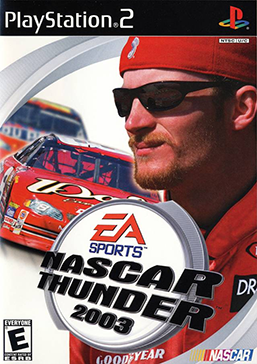
NASCAR Thunder 2003 is the sixth edition of the EA Sports' NASCAR racing simulator series. Developed by EA Tiburon and Budcat Creations and published by EA Sports. It was released for PlayStation, PlayStation 2, GameCube, and Xbox on September 18, 2002, and for Microsoft Windows on October 21. The product features Dale Earnhardt Jr. on the cover. It was the first time the NASCAR's Most Popular Driver Award recipient was featured on the cover, although he did not win the award for the first time until the following year. Dale Earnhardt appeared in the game as a driver as a result of entering his name as a Create-A-Car driver's name; he did not appear in the previous game due to his death. He appeared as a legend in subsequent games.

Grand Prix 4, commonly known as GP4 is a Formula One racing simulator game co-developed by Geoff Crammond's development studio Simergy and Infogrames' Chippenham development studio, and published by Infogrames. Released for the PC on June 21, 2002, it is the last entry in Crammond's Grand Prix series, and the last entry released under the MicroProse label. Based on the 2001 Formula One season, GP4 is a graphical and physics update from the previous version, Grand Prix 3, which was released in 2000.

Zapper: One Wicked Cricket! is a platform game for the Xbox, GameCube, PlayStation 2, Game Boy Advance, and Microsoft Windows. For most platforms, it was developed by Blitz Games and published by Infogrames Interactive; Atomic Planet Entertainment developed the Game Boy Advance version. Zapper was released in North America in 2002 and 2003 in Europe. On November 17, 2008, Zapper became available on Xbox Live as part of the Xbox Originals range. On February 15, 2024, Zapper was rereleased for Microsoft Windows on GOG and Steam platforms.
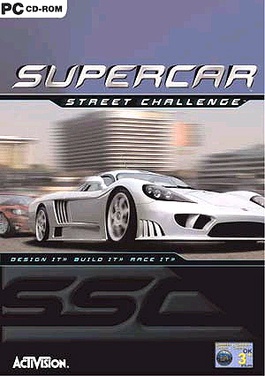
Supercar Street Challenge is a racing video game developed by Exakt Entertainment and published by Activision for PlayStation 2 and Windows in 2001.
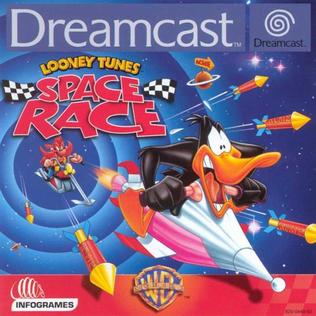
Looney Tunes: Space Race is a 2000 kart-racing video game published by Infogrames for the Dreamcast and developed through Infogrames' own Melbourne House studio. A version of Nintendo 64 was developed, but it was never released. It was ported to PlayStation 2 in 2002 with a new tournament mode and different soundtrack.
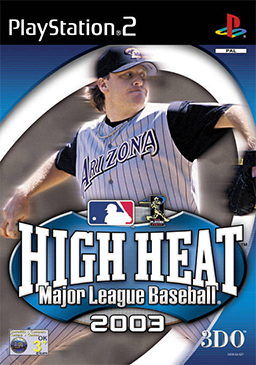
High Heat Major League Baseball 2003 was the second-to-last of a series of baseball computer games, released on PlayStation 2 and Microsoft Windows; a different game of the same name was released for the Game Boy Advance. The game, featuring the official licensed team and player names from all 30 MLB teams, was created by The 3DO Company, who later filed for bankruptcy in May 2003.

Splashdown is a water racing video game developed by Rainbow Studios and published by Infogrames originally for the PlayStation 2 and was later ported to the Xbox. It was released under the Atari brand name.

Transworld Surf is a sports video game developed by Angel Studios and published by Infogrames The game was released for GameCube, PlayStation 2, and Xbox between November 2001 and March 2003. The Xbox version of the game was the third game released under Infogrames' newly-revamped Atari label.

NASCAR Heat 2002, sometimes mislabeled as NASCAR Heat, is a NASCAR video game produced by Infogrames for the Xbox, PlayStation 2, and Game Boy Advance consoles. It is the successor to the 2000 game NASCAR Heat, and the predecessor to NASCAR: Dirt to Daytona. NASCAR Heat 2002 can have up to 24 (PS2) or 43 racers on one of 19 official NASCAR tracks, and the game was released in June 2001 for PlayStation 2. A port for the Xbox was released in November 2001. Developed by Crawfish Interactive, a distinct version for Game Boy Advance was released in May 2002.
Dirt Track Racing 2 (DTR2) is a video game developed by the now defunct Ratbag Games and published by Infogrames. It is the third and final game in the Dirt Track Racing series by Ratbag.

TD Overdrive: The Brotherhood of Speed is a racing video game developed by Pitbull Syndicate and published by Infogrames for PlayStation 2, Xbox, and Windows.
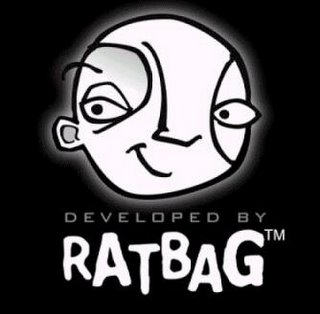
Ratbag Games Pty Ltd was a video game developer based in Australia.
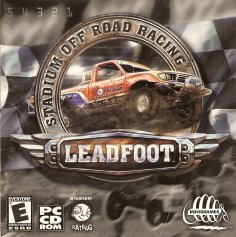
Leadfoot: Stadium Off-Road Racing, or Leadfoot for short, is a computer video game by the now defunct Ratbag Games. It is a spin-off of the dirt track racing series by Ratbag, which includes Dirt Track Racing, Dirt Track Racing: Sprint Cars and Dirt Track Racing 2. It is a racing game simulation reproducing the sport of stadium off-road racing. Pick-up trucks and buggies race around dirt tracks built inside stadiums - Supercross on four wheels.

Dirt Track Racing is a video game by the now defunct developer Ratbag Games. It is the first game in the series, which includes Dirt Track Racing, Dirt Track Racing: Sprint Cars, and Dirt Track Racing 2.

Dirt Track Racing: Sprint Cars is a sprint car racing video game by the now defunct Ratbag Games. It is the second game of the dirt track racing series by Ratbag, which includes Dirt Track Racing (DTR), Dirt Track Racing: Sprint Cars, and Dirt Track Racing 2 (DTR2).

Stunt GP is a radio-controlled car racing video game developed by the UK-based studio Team17, released in 2001. It was published by Eon Digital Entertainment for Windows and Dreamcast, and by Titus Software for PlayStation 2. Stunt GP uses the RenderWare engine. It has both single-player and offline multiplayer game modes using the split-screen method, and various game controllers are supported.

Le Mans 24 Hours is a video game released for the PlayStation, Game Boy Color, Dreamcast, PlayStation 2, and Microsoft Windows. The Dreamcast version was ported and published by Sega in Japan on 15 March 2001, while the PlayStation 2 version was ported and published by the same company on 13 June. Based on the famous 24 hours of Le Mans race in France, the player is invited to race the entire 24-hour endurance course or take part in a simpler arcade mode. The game also featured tracks such as Bugatti Circuit, Brno Circuit, Road Atlanta, Suzuka Circuit, Donington Park and Circuit de Catalunya, as well as a weather and night system.

















